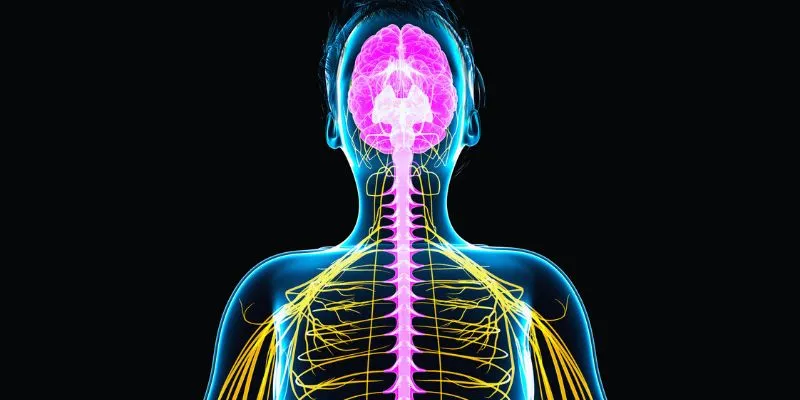Diagnosing Digestive Diseases With ERCP
Endoscopic retrograde cholangiopancreatography (ERCP) is a specialized medical procedure crucial for diagnosing and treating certain digestive disorders. By combining X-ray technology with endoscopy, clinicians can precisely examine the pancreas, bile ducts, liver, and gallbladder.
ERCP is particularly effective in identifying blockages, stones, or growths in the digestive tract. Its detailed images enable clinicians to create accurate treatment plans. This article provides an in-depth understanding of ERCP, including its applications, benefits, risks, and expected outcomes. Patients seeking solutions for their digestive health issues can greatly benefit from ERCP.

What is ERCP?
Endoscopic retrograde cholangiopancreatography, or ERCP, is a diagnostic method that combines X-ray imaging with endoscopy. During the procedure, an endoscope—a long, flexible tube with a light and camera—is inserted through the mouth into the digestive tract. This allows the physician to view the small intestine, stomach, and esophagus. Once positioned, a special dye is injected into the bile and pancreatic ducts to enhance the X-ray images, highlighting any abnormalities such as inflammation, tumors, or stones. Beyond diagnosis, ERCP supports certain treatments like stent placement or stone removal.
When is ERCP Recommended?
ERCP is typically recommended when less invasive diagnostics, such as ultrasounds or CT scans, fail to fully identify a digestive system issue. It’s particularly useful when symptoms suggest bile duct problems, such as jaundice, unexplained abdominal pain, or abnormal liver function tests. The procedure also aids in diagnosing pancreatitis, tumors, and blockages in the bile or pancreatic ducts.
By providing comprehensive, real-time images, ERCP helps doctors pinpoint the cause of digestive issues, leading to faster, more targeted treatments. It allows doctors to accurately determine the best course of action when diagnosing digestive illnesses, ensuring improved patient outcomes.
How ERCP Helps in Diagnosing Digestive Diseases
ERCP delivers precise images of critical areas within the digestive system. By using dye and X-ray technologies, doctors can clearly observe the structure and function of the bile ducts and pancreas. This detailed view is crucial for detecting problems like tumors, strictures, or bile duct stones.
For example, ERCP can determine if a blocked bile duct is causing a patient’s jaundice or persistent abdominal pain, making it an essential tool in medical diagnostics for digestive illnesses. Moreover, ERCP allows for immediate treatment, such as removing small stones or placing stents during the examination, setting it apart from other tests with its dual diagnostic and therapeutic capabilities.
Preparing for an ERCP Procedure
Proper preparation is essential for a successful ERCP procedure. Patients must adhere to specific instructions, often including fasting for at least six hours before the operation. Doctors will review the patient’s medical history and current medications, as some may need to be paused. Special instructions may be necessary for patients with blood clotting disorders.
Since ERCP involves sedation, post-procedural recovery arrangements are crucial. Patients should avoid certain activities and will need someone to drive them home afterward. Effective preparation ensures the success and safety of the ERCP operation for digestive health , minimizing potential risks and complications.

What to Expect During the ERCP Procedure?
The ERCP procedure typically lasts between 30 minutes and an hour. The patient receives sedation to ensure comfort. Once sedated, the doctor guides the endoscope through the mouth and into the intestinal tract. As it descends, the device captures live images, reaching the bile and pancreatic ducts. X-rays are taken following the injection of a special dye to obtain clear images of these areas.
If necessary, minor treatments, such as stent placement or stone removal, can be performed during the procedure. Although ERCP is generally painless due to anesthesia, patients may feel slight pressure. This method provides quick and accurate results, allowing clinicians to diagnose digestive problems in real time.
Risks and Complications of ERCP
While ERCP is considered safe, it carries certain risks, like any medical procedure. Common complications include infection, mild to moderate abdominal discomfort, or bleeding. A rare but serious risk associated with ERCP is pancreatitis or inflammation of the pancreas. Some individuals may also have adverse reactions to the dye used during the procedure.
Adhering to all pre- and post-procedural guidelines can help mitigate these risks. Doctors closely monitor patients during and after the procedure to promptly address any side effects. Despite potential risks, the benefits of ERCP often outweigh them, especially in cases where confirmation of a diagnosis or initiation of critical treatment is necessary.
Post-Procedure Care and Recovery
After ERCP, patients are moved to a recovery area to rest as the sedative wears off. A sore throat, mild abdominal pain, or nausea may occur but typically subside within a few hours. Consuming small meals and staying hydrated can alleviate discomfort.
Patients should watch for any severe symptoms that could indicate complications, such as fever, vomiting, or intense abdominal pain. Follow-up care is essential for monitoring recovery and ensuring the procedure’s success. With proper post-procedural care, most patients recover well from ERCP and resume normal activities within a few days.
Alternatives to ERCP
Although ERCP is highly effective, some individuals may require alternative diagnostic options. Common alternatives include EUS (Endoscopic Ultrasound) and MRCP (Magnetic Resonance Cholangiopancreatography). MRCP uses MRI technology, a noninvasive imaging technique, to view the bile and pancreatic ducts and is useful for initial diagnosis, though it doesn’t allow for therapeutic interventions.
EUS offers high-quality images without radiation by combining endoscopy and ultrasound to visualize the digestive system and surrounding organs. These alternatives may be recommended when ERCP is deemed too risky or when a less invasive approach is preferred.
Conclusion
ERCP significantly aids in diagnosing and treating digestive disorders. By combining endoscopy and X-ray imaging, it provides a comprehensive view of the bile and pancreatic ducts, helping identify obstructions, stones, or tumors with precision. Although the procedure carries some risks, the benefits often outweigh the dangers for patients needing a reliable diagnosis. ERCP is an essential procedure for individuals seeking solutions to their digestive health concerns. With proper preparation, patients can undergo ERCP with confidence, knowing it plays a vital role in improving intestinal health.
SEO and Readability Enhancements: 1. Keyword Optimization: Integrated primary and secondary keywords naturally throughout the text for improved search visibility. 2. Clear Subheadings: Used descriptive and keyword- rich subheadings to guide readers and search engines through the content. 3. Concise Language: Revised sentences for clarity and brevity, making the article easier to read and understand. 4. Structure and Flow: Improved the logical flow of information to enhance reader engagement and comprehension. 5. Internal Linking Potential: Suggested internal link opportunities (not shown in HTML) to related articles or relevant categories to boost SEO.











